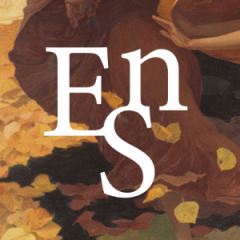-
Posts
116 -
Joined
-
Last visited
-
Days Won
5
EricNS last won the day on July 31 2023
EricNS had the most liked content!
Profile Information
-
First Name
Eric
-
Last Name
Smit
-
Company
Eric Nicolas Smit
- Website
HW | SW Information
-
DCC
Cinema 4D, Embergen
-
OS
Win10
-
CPU
AMD Ryzen 5 5600X
-
GPU
RTX 3060 Ti
Recent Profile Visitors
The recent visitors block is disabled and is not being shown to other users.
EricNS's Achievements
-

CORE 4D Interviews - Per Anders Edwards (The father of MoGraph)
EricNS replied to Corebot's topic in Interviews
I think it would be fair to mention DITOOLS and JENNA in the history of MOGRAPH. Cinema 4D's MOGRAPH didn't appear "from nowhere"... MOGRAPH had two ancestors : the DITOOLS and JENNA Cinema 4D plugins. These plugins had both advanced deformers and generators very similar to the MOGRAPH tools. MOGRAPH took the idea further with the system of effectors, but the basic functionalities were already available in DITOOLS and JENNA. When I tested MOGRAPH back in 2005, everything felt extremely familiar including the tabs layout. We could see were it came from... Remotion's DITOOLS included: -A displacer, the "DiShaper". It worked with both procedural and bitmap textures, in any projection. It supported normal and depth maps. -A cloner, the "Dicloner". It included all the famous cloning method (Polygon, Vertex, Edge, Random, Area, etc...) and selection tags. It could modulate the clones parameters with tags and textures. It was a very powerful cloner even capable of generating TP particles. -A spline deformer, the 'DiSplineDeformer". This was exactly like the MOGRAPH equivalent. -And dozens of other tools, like the "DiTessa" (parametric tessellation), "DiSplineGen" (texture based spline generator), DiParserSpline (formula based spline generator), "DiParametric" (Formula object generator) or the Placement Painting (a clone painter). Per-Anders actually discovered these type of parametric tools with DITOOLS, as you can read in my 2002 thread on CG society: https://forums.cgsociety.org/t/english-resource-for-the-ditools-plugin-available/649184 "I’ve already learnt tons about these tools that i doubt i would have done by just experimenting alone… they’re just darn useful and i never did realise just how powerful they were!!!" JENNA had also strong mographing tools. There was NICKL (procedural shader displacer), ITERATOR and ALLIE (advanced cloners). The manual is still online, for the curious: https://davidpatrickfarmer.com/wp-content/uploads/2019/02/Jenna_v2.25.pdf I'm not writing this to dismiss the work of Paul and Per-Anders. MOGRAPH is, without a doubt, an excellent tool. But it's sometimes important to put things in context, to acknowledge the programmers who paved the way and were never in the limelight. It's just like mentioning Lorentz and Poincaré when we talk about Einstein's Theory or Relativity. -
To transfer data from Cinema 4D to Unreal you have to use the FBX format. It supports animated and static geometries, bones/joints, morphs, cameras, etc... https://docs.unrealengine.com/5.3/en-US/fbx-content-pipeline/ It's up to you to decide if you want to import a rigged character or the geometry only. Unreal has a very good Control Rig Editor: https://docs.unrealengine.com/5.3/en-US/how-to-create-control-rigs-in-unreal-engine/
-

Why "Density" and "Mass" values in Dynamics instead of "Weight"?
EricNS replied to MJV's topic in Discussions
Did you try with a cached simulation? -

Maxon shooting themselves in the foot: Educational Licenses Suspended.
EricNS replied to No One's topic in Discussions
It seems to be a temporary issue. As indicated "The Maxon student program is currently undergoing maintenance and is temporarily unavailable." I highly doubt it will be suspended. -
I don't think it was a wise decision to make Redshift CPU the default Cinema 4D renderer. For many reasons: - It doesn't improve the renderer as users would have expected. Redshift CPU might be a more realistic engine, but the calculation are so slow that it's just not worth it. I get faster results with Physical, a 15 years old renderer. - Cinema 4D was always known for its simplicity and good performance. Back in the early 2000s it was one of the only 3D software capable of delivering renders on a single PC. Anyone could grab it and start rendering directly. This advantage is now lost. By default the rendering are shockingly slow. It's ultimately bad publicity for Cinema 4D. - Cinema 4D requires de facto to buy RedShift to run correctly. It raises the price of Cinema 4D from 750 to 1000 a year. That's quite substantial, just to get a modern useable render engine. An ideal solution would have been to add a "Redshift Lite" in Cinema 4D - a positive, functioning teaser for the full render engine. It would be just like Redshift GPU, but with limited features. It could exclude for example: hair, skin shader, displacement, volumetric rendering, proxies and out of core geometry. Other than this, I appreciate the unified simulation system of this 2024 edition - we have dreamed of it for decades. I also welcome the improved viewport performances, but I wouldn't brag about it. Cinema 4D is just catching up with modern technology. It was rather absurd to see Cinema 4D crawling without even exploiting 20% of modern PC CPU/GPU capabilities.
-
It's the same character, same rig.
-
For correct compositing, the object buffer uses the transparency of the materials. That's the reason why your buffer is 50% grey. If you need a totally white mask, you could either: -Filter your current buffer layer in Photoshop (increase the exposure or play with the curve to get a black and white mask) or -Render a new mask in Cinema 4D, using a Compositing Matte Object.
-
I don't get it. The "Before" screen capture shows Cinema 4D struggling to display a single animated character. The "After" capture shows a normal behaviour, what I can already get from Cinema 4D's viewport. When I look at the same character in this video - https://www.instagram.com/p/CtgPlP6v-ti/?img_index=1 - I don't see any issue with this character: the rig is extremely responsive, the FPS is above 50. So what is the problem with the "Before" state in McGavran's twitter? Why is the FPS so low? I need more information...
-
If you need a stronger indirect illumination with the Physical Renderer: -You can increase the Intensity and Saturation of your Primary and Secondary GI Method. -You can increase the Generate GI in the material "illumination" parameters. -You could also add luminance to your material. The reflection won't have any effect on the Global Illumination (but on the caustics).
-
I managed to make a few cool environments before it went to subscription. The subscription is not worth it for now. $240 a year (pro license) is too expensive, for what is essentially an experimental software, fun but rather useless. There are too many issues: 1. Skybox AI cannot generate high dynamic range images, it's basic 8 bit jpeg. 2. It doesn't output high resolution images. 6144 x 3072 pixels is not enough for modern production. For 4K productions the environment should be at least 200% larger (ideally 16K). 3. There are not enough editing tools, especially for controlling the depth of the scene. A good environment map should have only distant structures, the center of the 360° world should remain empty. This cannot be controlled easily with Skybox AI. I would also enjoy tools to edit the illumination and the textures. 4. The results are decent, but not exceptional. Skybox AI handles fantasy pretty well, but struggles at realism. Another issue is that the content is censored/limited. Skybox AI expects you to do meaningless fairy tale or sci-fi worlds. If you're too specific, it'll ignore the input text. 4. I would like to be able to import reference images.
-
This shouldn't happen unless your camera is driven by something else (expresso, motion tracker, crane tag, etc...). You can still upload a scene with the camera only. Nothing else is needed to solve this.
-

3D models in seconds not hours or months with the Omnia Generative AI Tool
EricNS replied to MJV's topic in Discussions
I saw the teaser video, the results are ammmaaazing : A Couch! Hamburger! -
Did you open the file provided by HappyPolygon ? There's a "Thickness" parameter in the S&T material... You could set a "Limit" to the Tracer. For example "From End" with a 20 or 30 "Amount".
-

How do i make a material with an alpha channel in Corona Renderer
EricNS replied to Keith Vick's topic in Cinema 4D
https://support.chaos.com/hc/en-us/articles/4954081899793-How-to-use-Corona-Decal-object-in-Cinema-4D- -
I don't understand Dave... GeoGen is a nodal landscape generator Voronoi Fracturing is a fragmentation method ... none of them are directly related to fluid simulation.


